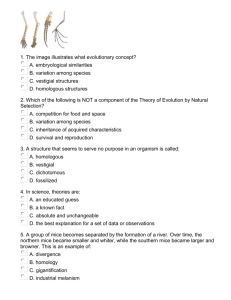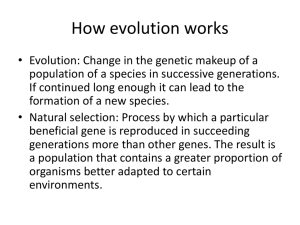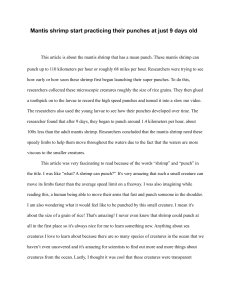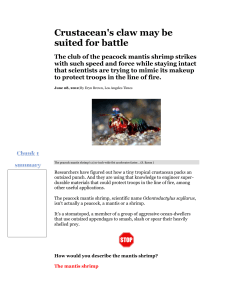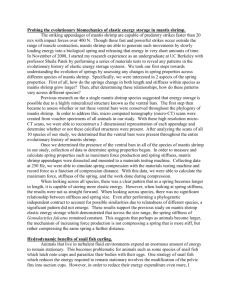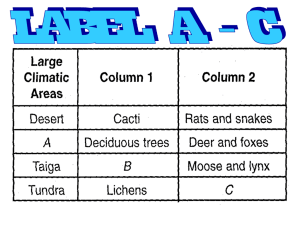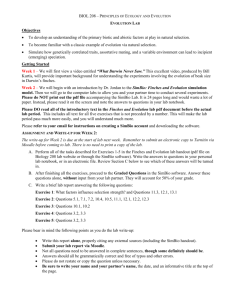Darwin Quest
advertisement
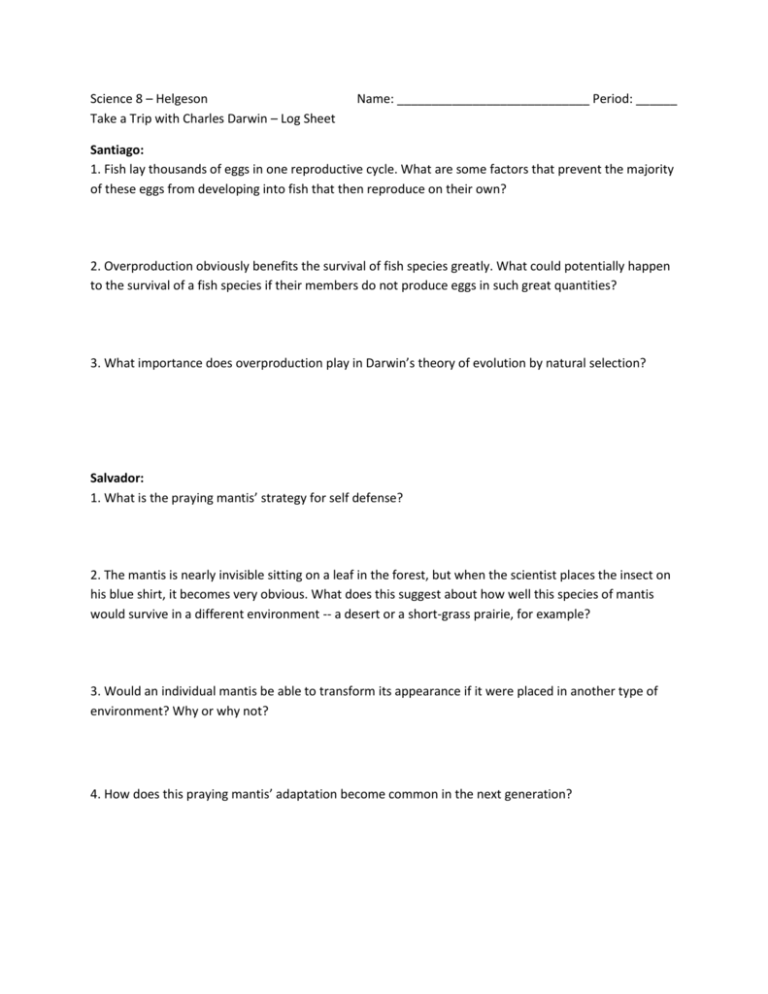
Science 8 – Helgeson Take a Trip with Charles Darwin – Log Sheet Name: ____________________________ Period: ______ Santiago: 1. Fish lay thousands of eggs in one reproductive cycle. What are some factors that prevent the majority of these eggs from developing into fish that then reproduce on their own? 2. Overproduction obviously benefits the survival of fish species greatly. What could potentially happen to the survival of a fish species if their members do not produce eggs in such great quantities? 3. What importance does overproduction play in Darwin’s theory of evolution by natural selection? Salvador: 1. What is the praying mantis’ strategy for self defense? 2. The mantis is nearly invisible sitting on a leaf in the forest, but when the scientist places the insect on his blue shirt, it becomes very obvious. What does this suggest about how well this species of mantis would survive in a different environment -- a desert or a short-grass prairie, for example? 3. Would an individual mantis be able to transform its appearance if it were placed in another type of environment? Why or why not? 4. How does this praying mantis’ adaptation become common in the next generation? Galapagos Islands: This diagram presents 10 species of finches on the Galapagos Islands, each filling a different niche on various islands. All of them evolved from one ancestral species, which colonized the islands only a few million years ago. 1. Describe the types of variation you see in the illustrations of Darwin's finches. 2. Why do you think each species' variation makes it well adapted to its physical environment? 3. Why do you think each species' variation makes it well adapted for its food supply? 4. How are the individual finches’ adaptations beneficial for their survival in their respective environments? Australia: The Isthmus of Panama only arose some 3 million years ago. When the land mass was formed, this geological phenomenon produced a speciation event: Populations of snapping shrimp divided by the isthmus have diverged into separate species. 1. How many different species of shrimp are currently found in the waters surrounding the Isthmus of Panama? 2. Scientists today now know that an important factor in speciation is isolation – separation of population by a barrier. What physical barrier separated groups of snapping shrimp approximately 3 million years ago? 3. Once isolated, the identical populations of shrimp began to evolve differently from one another. What factors may have caused these separated groups to physically change from their original parent species? 4. What other animal (that you have already studied on your voyage) diverged into separate similarlooking species as a result of speciation? St. Helena: There were two types of selection affecting the male guppie population – sexual (selection by the females for reproduction) and non-sexual (selection by the larger predatorial fish for food). 1. How does sexual selection affect the appearance of male guppies? 2. How does non-sexual natural selection affect the appearance of male guppies? 3. Why might variation in guppy coloration have developed as a trait? Conclusion: On a single sheet of 8 ½ x 11 blank paper, you will design two organisms of the same species that will express what you have learned about natural selection and how it determines which individuals will survive long enough in their environment to successfully pass their traits on to their offspring (in other words, reproduce). • Organism 1 has experienced a favorable mutation that would make it better suited to its environment, enabling it to obtain food, reproduce and pass its genes on to the next generation. • Organism 2 belongs to the same species, but was born with a non-favorable mutation that would cause nature to select against it.

